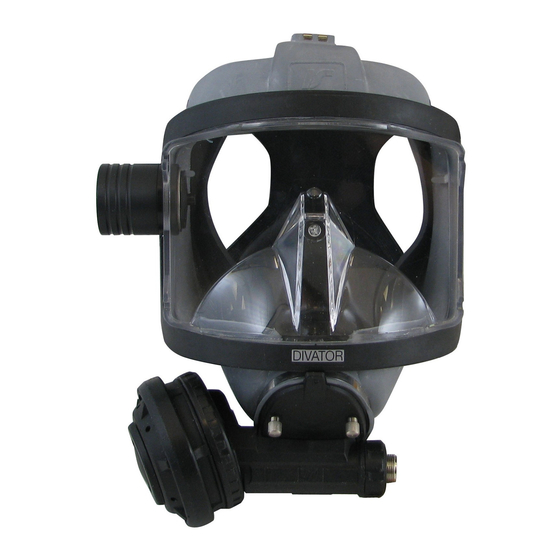Table of Contents
Advertisement
Quick Links
Advertisement
Table of Contents

Summary of Contents for INTERSPIRO Divator Pro
- Page 1 ENGLISH Diving in extreme conditions 34228B01 2022-05...
- Page 2 Copyright © 2022 Interspiro This publication contains or refers to proprietary information which is protected by copyright. All rights are reserved. Interspiro®, Oxydive® and Divator® are registered trademarks belonging to Interspiro. This publication may not be copied, photocopied, reproduced, translated, or converted to any electronic or machinereadable form in whole or in part, without prior written approval from Interspiro.
-
Page 3: Table Of Contents
Entering the water ................8 During dive ..................9 Repeated dives ................10 After dive ..................11 Instructions for specific equipment ............ 12 Divator Pro ................12 Divator RS4 ................12 Divator MKII ................13 Divator MKIII ................13 Surface supply ................. 14... -
Page 5: Cold Water Conditions / Low Air Temperatures
Diving in extreme conditions Cold water conditions / Low air temperatures Freezing may result in more or less serious malfunctions. These malfunctions can be reduced or prevented by the measures described in this document. Expansion of air causes the inhalation part of the breathing valve to be cooled to about 15 °C / 59 °F below the ambient temperature. - Page 6 In regulators MKII and MKIII the anti freezing cap/s shall be checked before dive and to be completely dry. In regulator RS4 / Divator Pro, when pressurized, press on the diaphragm on the safety pressure unit to make sure that the diaphragm is inflated and springs back.
-
Page 7: Donning
Diving in extreme conditions Donning Don the face mask/mouthpiece as late as possible in the procedure. The diver should hold his breath, if possible, until he is under the water surface. -
Page 8: Entering The Water
Diving in extreme conditions Entering the water Submerge directly to avoid breathing from the cylinder above the surface. If possible, the diver should avoid spending a long time at surface water, since freezing is more likely to occur in surface water than in deep water. When in the water, pre-dive checks shall be made below the water surface. -
Page 9: During Dive
Diving in extreme conditions During dive Repeatedly monitor the pressure gauge. Abort the dive at a pre-calculated air pressure. Make sure to pre-calculate appropriate amount of air for a safe return to the surface including a safety margin and/or necessary decompression time. -
Page 10: Repeated Dives
Diving in extreme conditions Repeated dives Repeated dives is when a new dive takes place while the equipment still is wet. On land, as soon as possible after leaving the water: Blow the breathing valves dry by pushing on the purge button (a few seconds) before you remove the full face mask (FFM) or mouthpiece/Octopus breathing valves. -
Page 11: After Dive
Diving in extreme conditions After dive Shake out water from the full face mask and the breathing valve. Disconnect necessary quick couplings as quickly as possible to prevent them from sticking together due to freezing. Put the wet and icy equipment in a heated environment to melt the ice. Remove anti freeze caps (MKII/MKIII) and allow any moisture inside to dry completely. -
Page 12: Instructions For Specific Equipment
Pre dive • The Divator Pro has a built-in anti freeze function that does not need to be disassembled before each dive in cold water. Follow the manual to check that the anti freeze function works before each dive. -
Page 13: Divator Mkii
Diving in extreme conditions Recommendations during the dive Use a Divator DP1 surface supply together with the regulator for extra safety. Use a sufficiently "high" air pressure to end the dive safely. Divator MKII During extreme conditions (water temp lower than 0 °C / 32 °F and current waters) an outer ice layer could cover the reserve warning so that operation of the reserve air is not possible. -
Page 14: Surface Supply
Diving in extreme conditions Add the “Ice-dive Kit” (31724-51) for the MK III regulator reserve air handle. Recommendations during the dive Repeatedly check the function of the reserve air handle by pushing and pulling the handle, checking that it is still possible to move from D to C position and back to D.














Need help?
Do you have a question about the Divator Pro and is the answer not in the manual?
Questions and answers